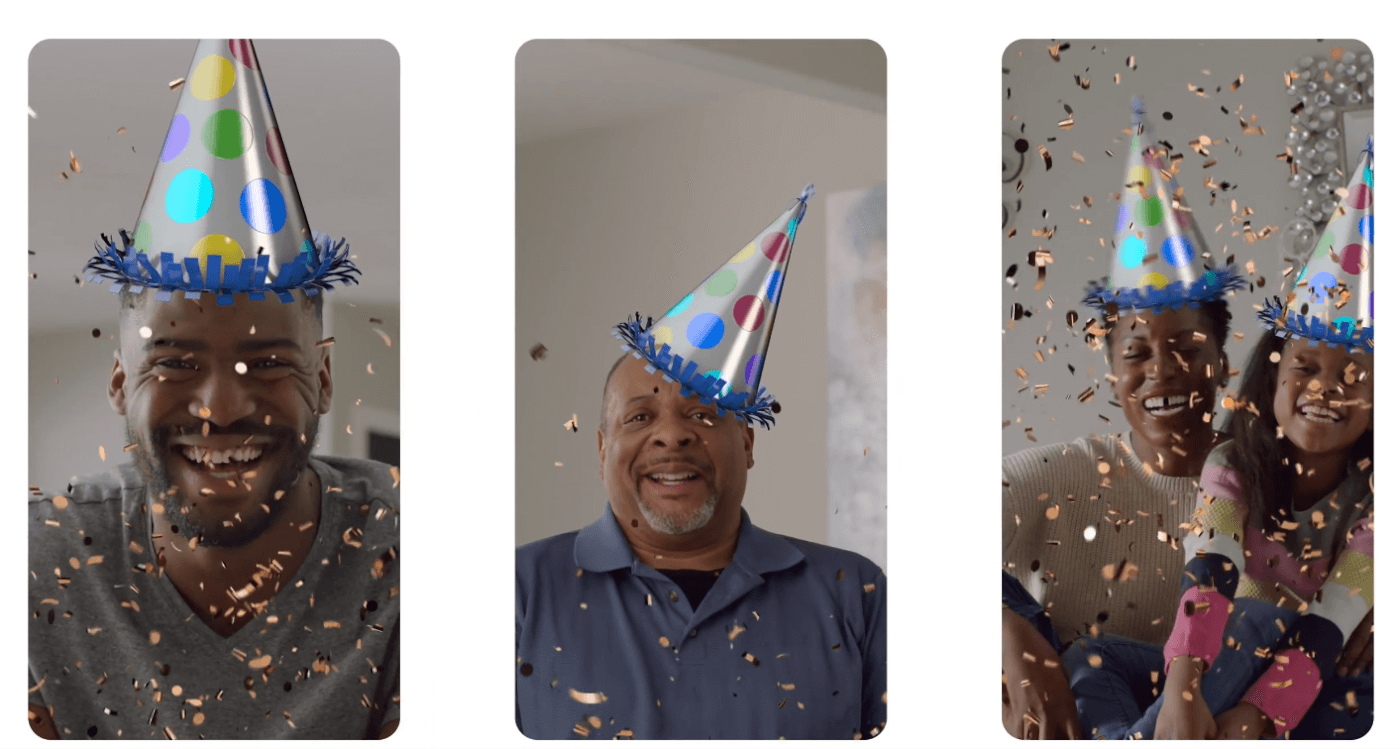Facebook’s 2021 F8 Refresh conference came with a slew of announcements centering on the future of AR and VR for the company’s suite of products.
Outside F8, Facebook appears to be keeping its word regarding the focus they heaped upon VR; as Casey Newton reported for Platformer, a recent flurry of VR acquisitions by Facebook indicates that they have every intention of expanding – and no doubt eventually dominating – this market.
However, VR has been touted as the next big thing for several years at this point, and Facebook’s focus on the technology is most likely part of a long game.
The Underlying Conflict of AR Filters
In contrast, the market for AR has moved significantly faster, mostly thanks to the now-ubiquitous integration of the technology in popular social media apps such as Instagram, TikTok, Snapchat, and Facebook Messenger.
According to one F8 video announcement, over 600 million people use AR via Facebook’s apps and devices every month. Given that prior to F8 Refresh the majority of Facebook’s AR developmental focus has been directed toward Instagram filters, one can reasonably assume that a large majority of those 600M monthly users are interacting with the technology on Instagram.
Instagram filters are contentious, especially so when considering those that beautify the user by smoothing the skin or applying “cosmetic” adjustments, such as enlarging the user’s lips or shrinking their nose.
Indictments regarding beauty filters can be found from academics and the media regarding their potential to induce serious concerns like dysmorphia. However, not all agree; some argue it is the right of the user to choose to use this technology, and others make alternate-use cases for the filters such as post-internet art.
Filter use is generally designated to the realm of selfie-taking, although they can be used congruously with other features across Instagram such as in video chats, live streams, or in Reels (Instagram’s latest feature aimed at drawing back some of the TikTok market).
Additionally, world-altering filters are available across platforms like Snapchat and Instagram, which interact with the user’s environment via the rear camera, rather than being applied to the user in selfie mode. However, in the aforementioned F8 video, a beta development program for multipeer AR filters was announced, which changes the argument for and against them completely.
What Is Multipeer AR?
Firstly, let’s look at how AR currently functions in a video chat. In Instagram/Facebook Messenger video calls, each participant can individually choose to apply an AR filter to themselves at any point. The filter is applied to the user who selects it, and their chat partner can also opt to apply one, but the filters do not interact.
By contrast, the introduction of multipeer AR to video chats would apply AR effects across the entire chat, making them interactive; for example, think of throwing a virtual ball towards your video chat-mate, and the ball appearing in their window in real-time. The interaction is visible to both of you across your individual chat screens. This would make the experience somewhat closer to what we are used to with a shared virtual reality than the current individual augmented reality we experience with most filters.

At present, the beta development program is open to AR experiences created for Instagram, Facebook Messenger and Portal.
So, What’s the Problem?
The main argument in favor of filters that beautify the user is that of personal choice. The introduction of multipeer AR effects essentially removes that choice-if someone applies a multipeer effect during your video call, it applies to everyone in the chat.
If you are someone that avoids beauty filters for personal reasons, or do not want them applied to others such as children, the lack of autonomy this potentially presents is concerning.
As multipeer AR is now only opening up to beta development, the F8 video only gives us a few concept ideas of how it may work. The video shows interactive games such as keeping a donut on a wavy line between users’ screens, or two friends warming themselves between an interactive campfire.

These are not inherently bad or damaging concepts. However, when Spark AR for Instagram left beta and development was opened to the general public, the availability of beautifying filters increased dramatically, leading Facebook to ban effects that were “associated with plastic surgery” for several months.
What Now?
Until we know more about the roll-out, who will be able to develop effects and whether tools that enable facial distortion will be allowed, it’s difficult to say which direction this development may go.
However, given the near-ubiquity of features such as skin-smoothing that are inherent to almost all filters (beautifying or not), it isn’t unreasonable to be wary and conscientious about the details of multipeer AR.
Increasingly, there is a reported disparity in people (particularly young women) between their digital image and their real-life image. AR filters are certainly not entirely to blame for this, and the encroachment of AR ‘touch ups’ in Zoom calls, coupled with the vast majority of us having lived the past year online, has meant the identity crisis between the online and offline self has only deepened for many.
Now, with the control over filter use potentially being taken out of our hands in certain situations, multipeer AR is an area that is worth monitoring and remaining vocal about as the beta program continues and we learn more about Facebook’s plans for this technology.
Guest Post
About the Guest Author(s)

Lauren A. Miller
Lauren A. Miller is a pre-confirmation PhD candidate at Swinburne University of Technology in Melbourne, Australia. Her research is focused on the sociological impacts of AR technology (most specifically Instagram filters) and the ways technology is increasingly intertwined with the beauty and surgical industries. Lauren has almost a decade's experience working in digital marketing, design, and social media with a primary focus on the hospitality industry.




